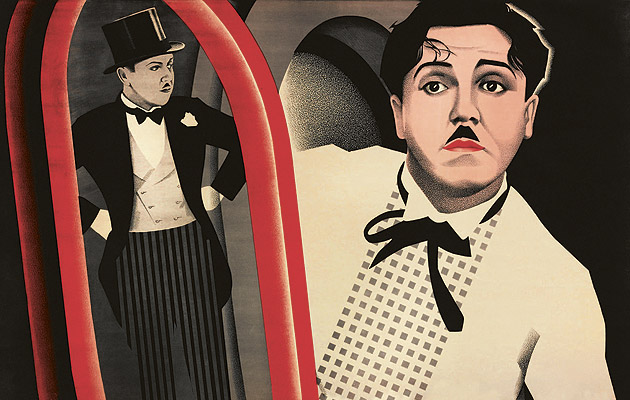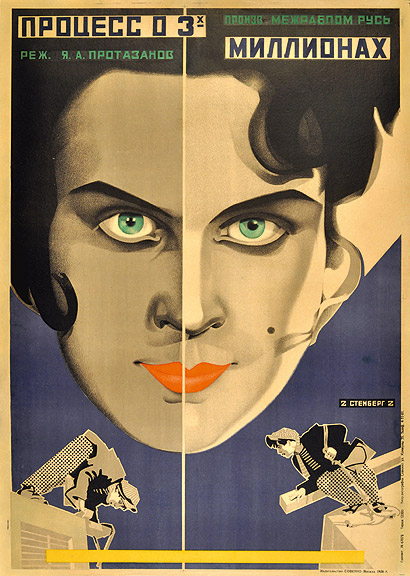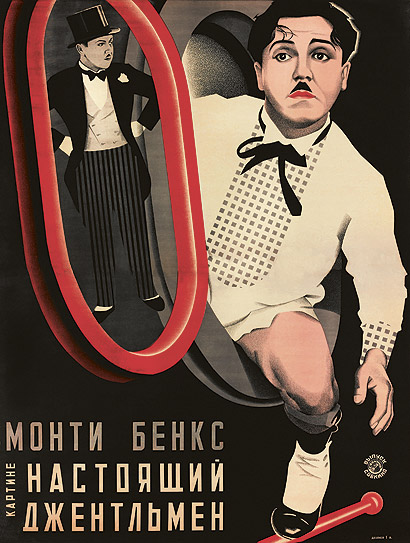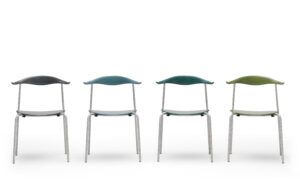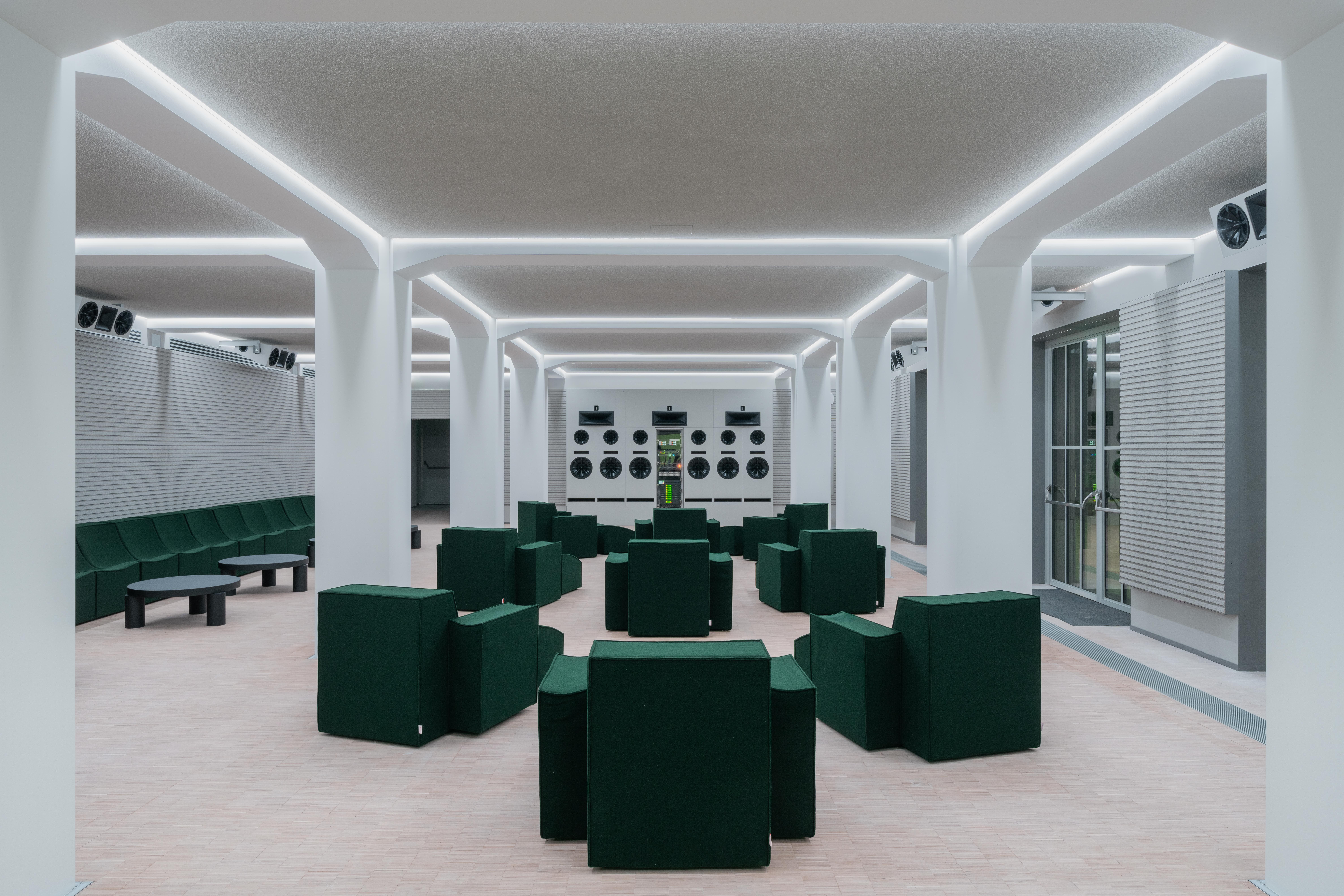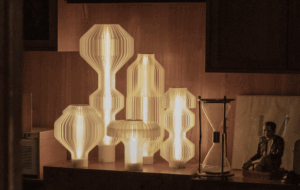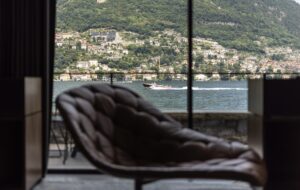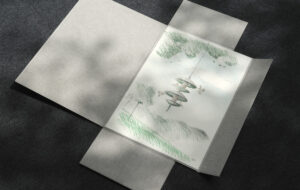|
Stenberg Brothers, A Perfect Gentlemen, 1928 (image: Courtesy GRAD and AntikBar) |
||
|
A collection of 1920s film posters displays bold techniques of montage – and a surprising reliance on painting, says Agata Pyzik The exhibition at the GRAD gallery presents the golden era of Soviet film poster, which despite its obvious link to film-making, was a more commercial form of media altogether. The Soviet authorities adopted film, more than any other kind of the avant-garde arts, as its major tool of propaganda. (Lenin famously called film, “the most important art”.) Poster art had to follow the rapid development of film, which was being supported in the early 1920s by state companies such as Goskino and Sovkino who took care of distribution. Tickets were cheap; it was a truly mass art. Politically committed directors, such as Vertov, Eisenstein, Pudovkin, Kuleshov and Dovzhenko wanted to create engaged films. And artist-designers such as Rodchenko, Stepanova and Klutsis established aesthetic rules for graphic design across many art forms. Film posters began to appear a few years behind the most innovative art – in the mid-1920s. The most recognised and talented artists, the Stenberg brothers, Georgii and Vladimir, developed a distinctively constructivist style, which they combined with the language of advertising. According to them, posters should shock, grab the attention and transport the viewer into a magical world of fast-paced film. Influenced by the “fast-montage” school, their posters mimicked innovations in film: distortions, rapid movement, reversed perspectives were their daily bread. These effects were a result of technology: unusually, they placed photographic images over preprinted paper to produce the crazy angles present in many of the posters. Two posters the Stenberg brothers created for Vertov’s Man With a Movie Camera still astound today. On one, the dizzying effect of the film is represented by the dismembered body of a girl, floating in a cityscape, surrounded by skyscrapers. On another, it’s the power of the eye – the camera, which becomes transported on to the body, in a strange attempt at Soviet body art. In the poster for Battleship Potemkin, a tiny marine walks smoothly on top of the enormous cannons like circus artists. Time and space are no limitation. Commercial considerations meant that film posters shared the American fascination for crazy slapstick comedy and Taylorist mechanisation. The city consisted of car chases, robots, trains, skyscrapers and – let’s not forget – sexy flappers toying with men’s clothes. Anything related to movement and modernity is there. Sport is also important: cyclists and bodies are a reflection on the cult of sports festivals (Spartakiadas). Bodies are frequently cut into pieces and scattered about without any respect for gravity. But then these images have to make way for tributes to rural comrades and the backbreaking work of Soviet men and women in agricultural fields and on collective farms. The GRAD exhibition shows how the abstract approach gives way to the figurative, ending up somewhere much too close to Socialist realism. Just as in other avant-garde’s (the Bauhaus in particular), the artists came straight from commercial and functional graphic design backgrounds. The Soviets took it a step further: they tested the gains of the crazier ideas of the Futurist movement, filtering it through images that were easier to look at. What stood in their way were the limitations of technology, particularly the ability to get true colours in mechanical reproduction. That’s why so many of these posters had to be hand-painted. Given how violently the early constructivists rejected any archaic forms of art, this was a bit of a regression; painting was supposed to be dead. Rodchenko and co all made photomontages using scissors – which went hand in hand with mass media – in the same way that Dadaists such as Heartfield and Hannah Hoch did. Yet, because of the handmade element, no matter how great their formal adventurousness and how bold the juxtapositions, Soviet posters resemble their European art deco contemporaries. The art of the Soviet film poster was somewhere between the revolutionary and the everyday; it may be the closest to an avant-garde for everybody we’ve ever had.
Poster for The Three Million Case, Stenberg Brothers, 1922 (image: Courtesy of GRAD and AntikBar)
Stenberg Brothers, A Perfect Gentlemen, 1928 (image: Courtesy GRAD and AntikBar) Kino/Film: Soviet film posters of the silent screen, GRAD Gallery, London, Until 29 March 2014 |
Words Agata Pyzik |
|
|
||

